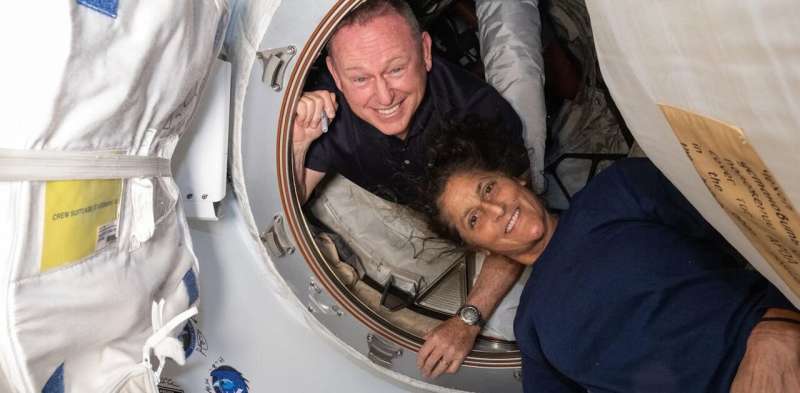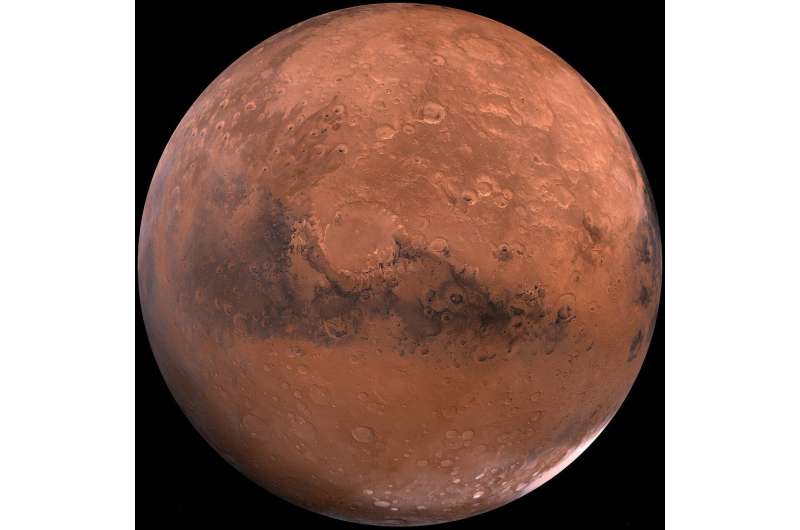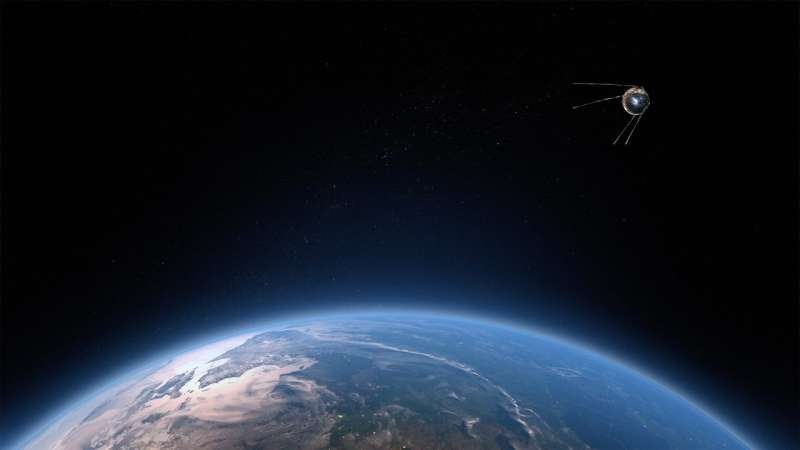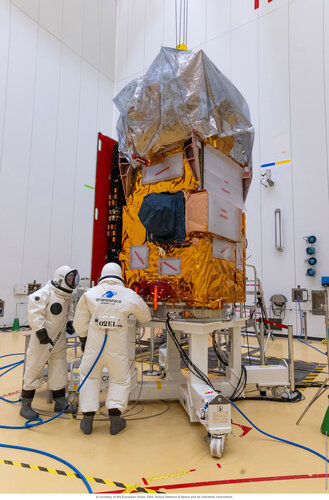Boeing Starliner astronauts: What six months stuck in space may do to their perception of time
Monday, 19 August 2024 13:33
Two astronauts marooned in space may sound like the plot of a Hollywood blockbuster, but for two NASA crew members, it is now a reality. Commander Barry Wilmore and pilot Sunita Williams are currently in limbo on the International Space Station (ISS).
They arrived in the Boeing Starliner spacecraft—the first test of the spaceship with astronauts. Wilmore and Williams were supposed to stay on the ISS for around eight days and return on the same spacecraft. But there is now debate about the safety of Starliner after it experienced helium leaks and thruster problems on its way to the ISS.
In coming days, NASA and Boeing may decide to clear Starliner to carry the astronauts back to Earth. This means their stay might not last too much longer. But if officials decide against Starliner, the astronauts face waiting an additional six months in orbit before returning.
Mars-bound payload on way to Florida for 1st launch of Blue Origin New Glenn
Monday, 19 August 2024 08:49
The Mars-bound twin spacecraft for NASA's ESCAPADE mission were packed up in California to be shipped out to Florida this week ahead of what would be the first ever launch of Blue Origin's New Glenn rocket from Cape Canaveral.
ESCAPADE stands for Escape and Plasma Acceleration and Dynamics Explorers, and the mission's purpose is to orbit Mars and observe plasma and magnetic fields around the planet to help understand what processes strip atoms from Mars' magnetosphere and upper atmosphere. That could help explain why Mars' atmosphere is so thin, and how it may have evolved over time.
The two small satellites, dubbed Blue and Gold, were built by Rocket Lab in California for NASA and the University of California Berkeley's Space Science Laboratory.
They will soon arrive at Kennedy Space Center where they will head to a cleanroom for post-transport inspections and tests. Eventually, they will be encapsulated for launch on New Glenn from Blue Origin's pad at Cape Canaveral Space Force Station's Launch Complex 36, something Blue Origin officials state will happen before the end of the year.
Webb data suggests our model of the universe may hold up after all
Sunday, 18 August 2024 17:11 We know many things about our universe, but astronomers are still debating exactly how fast it is expanding. In fact, over the past two decades, two major ways to measure this number - known as the "Hubble constant" - have come up with different answers, leading some to wonder if there was something missing from our model of how the universe works.
But new measurements from the powerful Ja
We know many things about our universe, but astronomers are still debating exactly how fast it is expanding. In fact, over the past two decades, two major ways to measure this number - known as the "Hubble constant" - have come up with different answers, leading some to wonder if there was something missing from our model of how the universe works.
But new measurements from the powerful Ja Starship: Unpacking the Complexities of SpaceX's Two-Stage Vision
Sunday, 18 August 2024 17:11 SpaceX's Starship program stands as one of the most ambitious endeavors in the history of space exploration. Envisioned as a fully reusable spacecraft capable of carrying humans and cargo to destinations such as the Moon, Mars, and beyond, Starship represents a significant leap in space travel technology. However, the journey to achieving this vision is far from straightforward, and the technica
SpaceX's Starship program stands as one of the most ambitious endeavors in the history of space exploration. Envisioned as a fully reusable spacecraft capable of carrying humans and cargo to destinations such as the Moon, Mars, and beyond, Starship represents a significant leap in space travel technology. However, the journey to achieving this vision is far from straightforward, and the technica GovMilSpace 2025 to Highlight Crucial Government and Military Space Collaborations
Sunday, 18 August 2024 17:11 The SATELLITE Conference and Exhibition is set to debut GovMilSpace 2025, a significant new addition aimed at enhancing collaboration between government, military, and space industry leaders. This forum will complement the established SATELLITE show, recognized globally as the premier event for the satellite and space sectors.
As space and cybersecurity increasingly become cornerstones of
The SATELLITE Conference and Exhibition is set to debut GovMilSpace 2025, a significant new addition aimed at enhancing collaboration between government, military, and space industry leaders. This forum will complement the established SATELLITE show, recognized globally as the premier event for the satellite and space sectors.
As space and cybersecurity increasingly become cornerstones of China Deploys First Batch of Qianfan Satellites to Enhance Global Mobile Connectivity
Sunday, 18 August 2024 17:11 On August 6, the China National Space Agency successfully launched 18 communication satellites, the initial group of the Qianfan network, using a Long March 6A rocket from the Taiyuan Satellite Launch Center in Shanxi province. These satellites have been positioned in their designated orbit, marking a significant step toward expanding mobile communication services globally.
The Qianfan con
On August 6, the China National Space Agency successfully launched 18 communication satellites, the initial group of the Qianfan network, using a Long March 6A rocket from the Taiyuan Satellite Launch Center in Shanxi province. These satellites have been positioned in their designated orbit, marking a significant step toward expanding mobile communication services globally.
The Qianfan con Rare 'Supermoon Blue Moon' begins Monday; 1st of 4 upcoming supermoons
Sunday, 18 August 2024 17:11 Sky gazers across the United States and the rest of the world have a treat in store next week when a rare "Supermoon Blue Moon" will come into view, one of four on tap in the coming months.
The upcoming supermoon event begins at 2:26 p.m. EDT on Monday and will last for three days, according to NASA.
A supermoon is defined as a new or full Moon that occurs when the Moon is within
Sky gazers across the United States and the rest of the world have a treat in store next week when a rare "Supermoon Blue Moon" will come into view, one of four on tap in the coming months.
The upcoming supermoon event begins at 2:26 p.m. EDT on Monday and will last for three days, according to NASA.
A supermoon is defined as a new or full Moon that occurs when the Moon is within Senegal's first satellite successfully launched
Sunday, 18 August 2024 10:25
Senegal's first satellite has been successfully launched into orbit, President Bassirou Diomaye Faye said, adding the move marked a major step towards the West African country's "technological sovereignty".
The GAINDESAT-1A satellite was launched at 18:56 GMT Friday from the Vandenberg base in California, Faye wrote in a post on X late Friday.
"The result of five years of hard work by our engineers and technicians, this advance marks a major step towards our technological sovereignty," Faye said.
"I would like to express my pride and gratitude to all those who made this project possible," he added.
Senegal's public broadcaster RTS said the satellite was designed and manufactured by Senegalese engineers, in partnership with the French Montpellier University Space Centre (CSUM).
The broadcaster said a Falcon 9 rocket took off from Vandenberg base and launched a number of satellites, including the GAINDESAT-1A, into orbit.
RTS said the satellite will collect data for various state agencies including the Directorate for Water Resources Management and Planning (DGPRE) and the National Civil Aviation and Meteorology Agency.
© 2024 AFP
SpaceX launches Falcon 9 carrying Transporter-11 satellite mission
Saturday, 17 August 2024 22:03 SpaceX launched a Falcon 9 rocket with the Transporter-11 mission into low-Earth orbit Friday afternoon as scheduled from Space Launch Complex 4E at Vandenberg Space Force Base in California.
After the rocket booster stage separation, the Falcon 9 landed on Landing Zone 4 at Vandenberg Space Force Base with no issues.
The at 2:53 p.m. EDT launch was streamed live.
SpaceX s
SpaceX launched a Falcon 9 rocket with the Transporter-11 mission into low-Earth orbit Friday afternoon as scheduled from Space Launch Complex 4E at Vandenberg Space Force Base in California.
After the rocket booster stage separation, the Falcon 9 landed on Landing Zone 4 at Vandenberg Space Force Base with no issues.
The at 2:53 p.m. EDT launch was streamed live.
SpaceX s Scientists Trace Dinosaur-Extinction Asteroid to Outer Solar System
Saturday, 17 August 2024 22:03 Geoscientists from the University of Cologne have led an international research team in pinpointing the origins of the asteroid responsible for the extinction event that wiped out the dinosaurs around 66 million years ago. By examining samples from the boundary layer between the Cretaceous and Paleogene periods-a time that marked Earth's last major mass extinction-the researchers identified the
Geoscientists from the University of Cologne have led an international research team in pinpointing the origins of the asteroid responsible for the extinction event that wiped out the dinosaurs around 66 million years ago. By examining samples from the boundary layer between the Cretaceous and Paleogene periods-a time that marked Earth's last major mass extinction-the researchers identified the 
 Image:
Sentinel-2C fully loaded
Image:
Sentinel-2C fully loaded 






